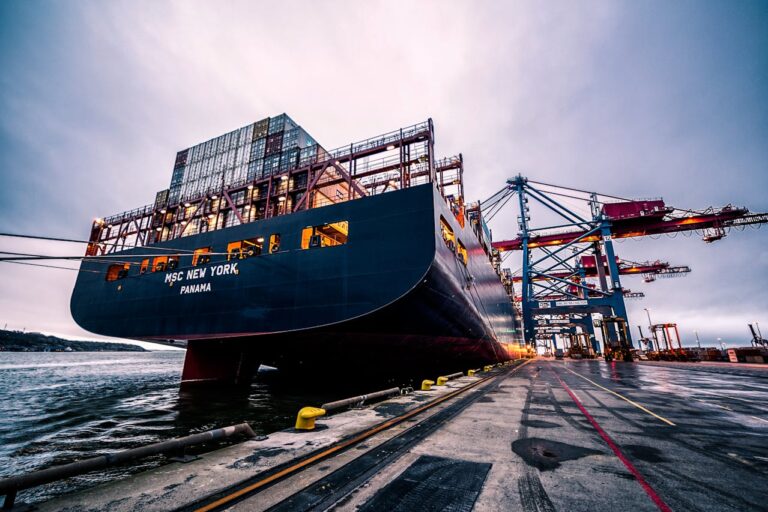International shipping presents many obstacles for businesses looking to expand their reach across different countries. The process requires careful preparation, starting from properly packaging goods to choosing the right transport options; therefore, without necessary precautions, items may encounter damage or loss while in transit to overseas destinations. This comprehensive guide discusses significant strategies and effective methods that businesses can implement to ensure the product arrives safely and efficiently.
Understanding Risks in Overseas Shipping
Businesses must first acknowledge the different challenges inherent in the international transport of merchandise. Long journeys mean goods undergo multiple handling procedures, which increases the risk of damage due to impacts and pressure changes. There can also be delays because of customs inspections or weather-related situations, which may increase the possibility of goods damage if not stored properly in storage for long periods. Furthermore, changes in temperature, moisture exposure, and rough handling are constant possibilities during transit, impacting items. Therefore, careful planning is required for safe transport through several stages of overseas journeys.
The type of goods being shipped determines the required packing methods; fragile goods, for example, need extra padding and support with more care during transit. Additionally, the geographic location and method of transit can also greatly affect risk assessment, because items shipped through certain routes may experience more intense environmental challenges compared to other options. Finally, potential political or economic disturbances in destination countries introduce extra uncertainty to the shipping schedule. Proper understanding and assessment of such variables are very important to secure items being shipped.
Implementing Effective Packaging Methods
Robust packaging remains a primary shield against the common transit hazards that merchandise can suffer. Selecting packaging material that matches the product type is vital for maximum safety; goods must have durable outer cartons that can withstand compression and physical shocks. Using extra padding, including bubble wrap, foam inserts, or packing peanuts, helps absorb shocks and minimizes the risk of damage offering an extra protective layer. Furthermore, careful attention should be given to the internal space inside the package so goods do not shift inside during transit.
Correctly securing products can greatly affect their survivability. Use methods of packaging that restrict movement during transit, such as strapping products firmly in place with durable material. For heavier or fragile items, consider employing the use of palletizing, which involves securing the packaging onto a pallet for greater strength and stability. Another method involves applying shrink wrapping that provides extra support to the pallet. Finally, carefully seal all packages with high-quality tape to avoid possible moisture damage, and to reduce tampering during transit.
Choose the Right Shipping Containers
The right shipping container is critical to the safety of your business goods during international transit. Containers must be durable, weather-resistant, and suited to the specific type of cargo, whether it’s perishable items, heavy machinery, or fragile goods. Temperature-sensitive products require insulated containers or refrigerated units, while general cargo can be shipped using standard containers.
Businesses can look at shipping containers for sale in Miami or other areas to get top-quality containers to meet their shipping needs. They are designed to withstand rough handling, oceanic conditions, and long transit times, so that goods remain safe and sound. The right container paired with the proper internal packaging methods, like cushioning or strapping, provides an additional layer of security. Choosing the right shipping container is a smart investment in protecting the integrity of products and ensuring customer satisfaction.
Considering Appropriate Transportation Options
Choosing appropriate shipping options is just as important as correct packaging strategies. Different shipping options will have various transit times, risks, and cost implications. Ocean freight through large cargo ships remains the most cost-effective approach for bulk shipments. However, the process can require extended shipping time; air freight provides the benefit of speed, yet the cost may be higher for companies. Companies can choose these two methods or consider a combination of them. Each has its own advantages and disadvantages.
The selection of correct transit depends significantly on the type of goods, the time needed, and company finances. Items that have a shorter shelf life, perishable commodities, or urgent supplies often require air shipping for reduced transportation times. If goods need very specialized handling and temperature-controlled environments, businesses must ensure they select providers who can support special cargo transportation. Furthermore, it’s critical that companies investigate and assess the dependability of service of various carriers before making final decisions because that affects the safety and timeline of transportation.
Insurance and Documentation are Very Important
Securing proper insurance protection will protect businesses from any unexpected financial loss. Comprehensive transit insurance is critical because it covers merchandise while in the custody of shipping carriers or storage facilities until delivered to its end destination. In addition, insurance acts as a financial safety net if unforeseen events occur during transit, such as damages or loss. Insurance needs to be selected that is aligned with your business requirements.
Conclusion
Effectively protecting merchandise during overseas shipping operations demands a meticulous approach that involves understanding possible hazards, implementing suitable packing, picking correct transport options, and protecting financial interests with proper transit insurance. Businesses that follow this plan can have more success in the overseas shipping of goods, and that will increase customer satisfaction and enhance the company’s market position within the international business world. By being proactive and careful during each stage, businesses will have increased reliability of goods arriving safely and securely across different countries.



